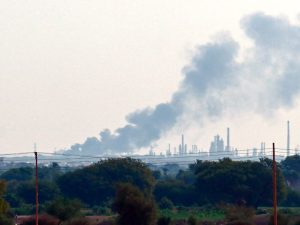Arctic and boreal latitudes are warming faster than any other region on Earth, leading to significant changes in the ecosystems in these areas. A study published in Global Change Biology reveals that wildfires are increasing rates of photosynthesis in Canada and Alaska, wiping out black spruce forests and allowing deciduous shrubs and trees to move in and establish themselves faster. In 2023, Canada experienced a devastating wildfire season, suggesting that these fires may further accelerate changes in northern forests that are already occurring due to climate change. While increased photosynthesis may initially help remove carbon dioxide from the atmosphere, the combustion of carbon stored in plants and soils may ultimately negate this benefit.
To measure the changing rate of photosynthesis in boreal plants, researchers used data from Orbiting Carbon Observatory 2 satellites to track fluorescence as a proxy for photosynthesis. This novel approach allowed them to observe how wildfires are changing the land cover and significantly impacting carbon fluxes at large spatial scales. The unstable ecosystems in these regions are experiencing rapid changes in plant composition, further highlighting the urgent need to study how these changes are influencing land carbon cycling and ultimately affecting the Earth’s climate.
Another study led by a team of researchers describes the expansion of plants into Arctic and alpine tundra areas due to increasing temperatures and wildfire activity. They found increased growth of deciduous shrubs, particularly alder, in these tundra sites, as well as overall increased vegetation productivity. Additionally, the thickness of the organic layer in the soil, which plays a crucial role in promoting permafrost stability, was reported to be decreasing. This decrease could lead to the release of frozen organic matter, potentially releasing planet-warming gases into the atmosphere.
In a third study published in Geophysical Research Letters, researchers discovered that as Arctic ecosystems warm, emissions of the molecule isoprene are escalating at rates higher than anticipated. Isoprene plays a crucial role in affecting the formation of ozone, aerosols, and methane in the air, which can have indirect impacts on climate. Plant release more isoprene in warmer weather, indicating that as the climate warms, these emissions may continue to increase. These findings further underscore the rapid changes occurring in Arctic-boreal ecosystems in response to wildfires and warming, with complex interactions between changing plant communities and the rapidly changing climate.
These studies highlight the urgent need to better understand the consequences of the rapidly changing Arctic environment on the overall Earth system. The increasing wildfire activity, through its impact on vegetation composition, has the potential to accelerate permafrost thaw at rates beyond what was previously expected based on changing climate alone. The environment is clearly unstable, with complex interactions between changing plant communities and climate responses that have far-reaching consequences. As the Arctic continues to change more rapidly than predicted, it is essential to further study these interactions and their implications for the environment and the Earth’s overall climate system.




